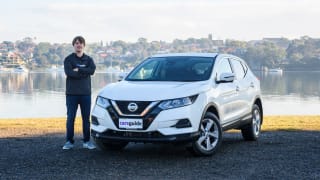
Nissan Qashqai 2019 review: ST+
In the rapidly changing world of small SUVs, can the five-year old Qashqai still keep up?
Browse over 9,000 car reviews
If the world is simply asking “SUV?”, with the only clear distinction in needs being whether or not you want seven seats, a car maker trying to answer the question may as well apply a shotgun approach when it comes to smaller five-seat models.
Anything this side of a Suzuki Jimny comes with five seatbelts, so there’s a vast spectrum of potential when it comes to sating sub-seven seater demand.
Mazda has aimed at the lower end of what the industry describes as small and mid-size classes with the CX-3 and CX-5 to great success, but has clearly noticed the popularity of in-betweeners like the Mitsubishi ASX, Nissan Qashqai and Honda HR-V. Kia will also launch the similarly sized Seltos at around the same time.

The new CX-30 completes a three-way pellet spray across the smaller end of the SUV market, which we’ve just driven for the first time in Germany ahead of its Australian debut in the first quarter of 2020.
It promises to right the CX-3’s biggest wrongs and build on the outstanding pedigree of the all-new Mazda3 which arrived in April.
| Mazda CX-30 2020: G20 Pure Vision (fwd) | |
|---|---|
| Safety rating | |
| Engine Type | 2.0L |
| Fuel Type | Regular Unleaded Petrol |
| Fuel Efficiency | 6.5L/100km |
| Seating | 5 seats |
| Price from | $28,600 |
The CX-30 design is essentially a taller, less dramatic version of the latest Kodo looks sported by the new Mazda3 hatch, with vast expanses of unpainted plastic lining its lower surfaces and wheelarches to manage visual weight and disguise its more upright body.
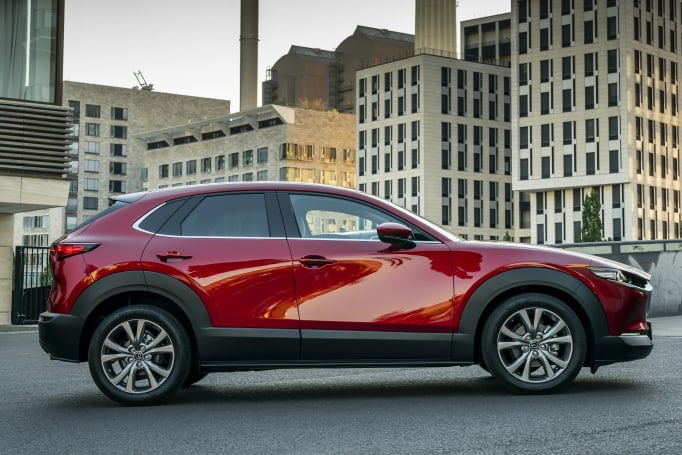
The design is the work of Ryo Yanagisawa, whose previous credits include the current Mazda2 and the still very ‘Nagare’ looking BT-50 as it first appeared in 2010.
The CX-30 is the second model of a new generation of Mazdas after the new Mazda3, and demonstrates Mazda’s new human-centred approach to development. This also seems to mean a better balance of practicality with design aesthetics - which is pretty important for an SUV.
In terms of size, it’s 125mm longer and 20mm wider than a CX-3, but still a full 150mm shorter and 45mm narrower than a CX-5.
The interior is a continuation of Mazda3 themes, with complex shapes and quality feel materials giving it a much more upper class air than either of the existing SUVs.
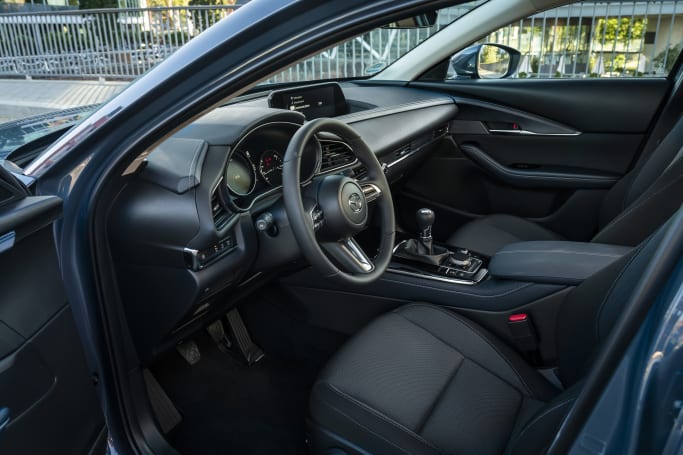
But to our eyes very little is shared with the Mazda3, unlike the CX-3 which uses the whole dash of the Mazda2.
This is where the CX-30 is set to really shine, with interior dimensions much closer to the CX-5 than its exterior.
A key design goal was to fit four 184cm (6ft) adults comfortably, which you’ll likely manage in a CX-3 but it won’t necessarily be comfortable.
Much of this comes from a wheelbase just 45mm shorter than a CX-5, and explains the relatively stubby tail.
The back seat also thankfully features directional air vents and a centre armrest with cupholders (in the high spec version we drove), plus two ISOFIX child seat points, bottleholders in the doors to match those up front and a further two cupholders in the front centre console.
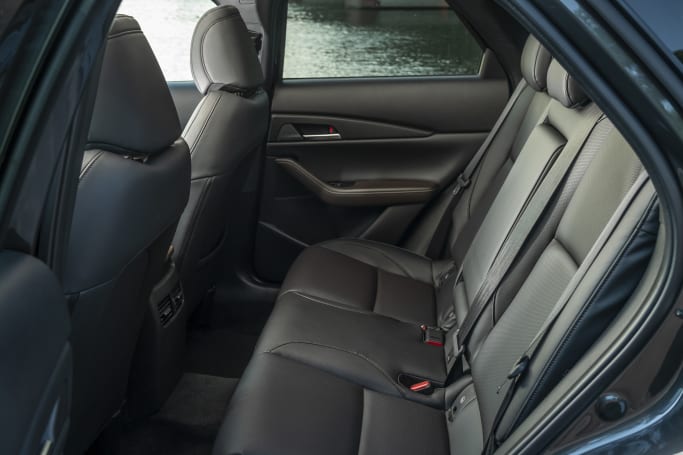
Another interesting detail is that the front seats are as far apart as a CX-5 despite the CX-30 body being 45mm narrower, to add to the perception of spaciousness.
The boot is also much closer to CX-5 than CX-3, and has been designed to accommodate a full-size baby pram and more. This will be great news for anyone who’s tried the same with a CX-3 and found it won’t even accommodate an umbrella stroller.
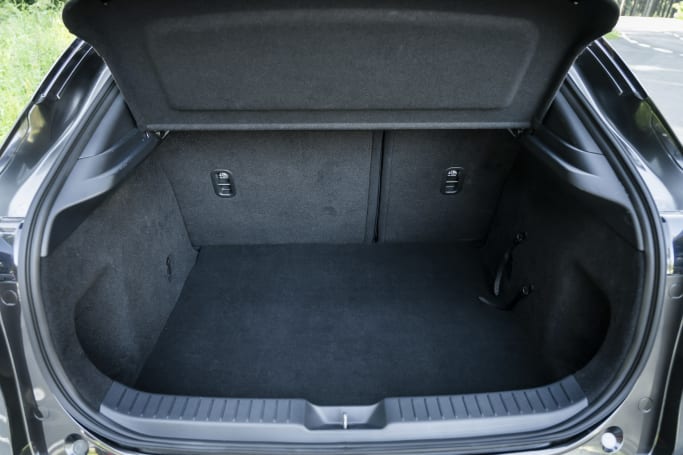
A squarer load opening is also complemented by a generous cargo floor width of 1020mm.
We only know Euro-spec 430L VDA boot capacity for now, which doesn’t have a space saver spare under the boot floor. This is within 47L of the also spare-free European CX-5, so based on the Australian CX-5 figure of 442L VDA, so we expect a final figure of around 395L VDA. Given your standard Woolies trolley will carry 211L, the CX-30 is sounding good.
Mazda sees the CX-30 as suiting young couples with a view to carrying their first child. That vision certainly feels on the money, but we look forward to testing how much room is left ahead of a rear-facing child seat when it arrives on our shores.
Mazda is yet to confirm pricing and specifications for Australian CX-30s, but bank on it overlapping the CX-3 and CX-5 line-ups with a similar (if not identical) array of trim levels as the new 3.
This means it’s likely to come with a bunch of safety stuff not even available on quite a few of its rivals, so even if it sits higher up the price scale like the new Mazda3, it’ll likely still be a decent value argument.
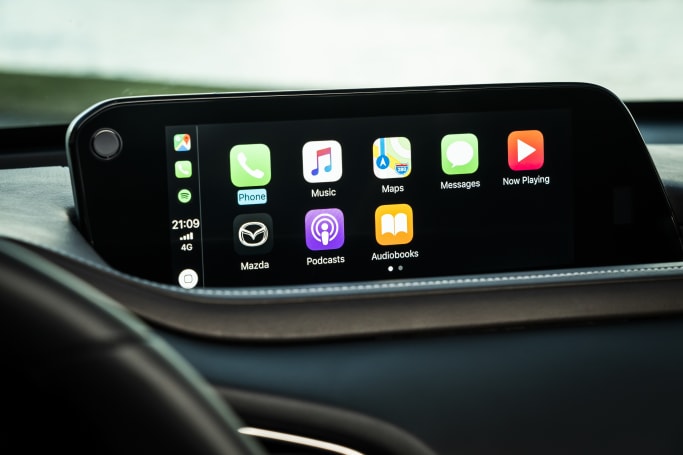
You can also count on Apple CarPlay and Android Auto connectivity within the multimedia system, as with all new Mazda’s launched since the latest CX-9 update in September 2018.
Mazda is also yet to confirm local drivetrain options, but we’d be surprised if it didn’t mimic the 2.0-litre and 2.5-litre petrol options of the new Mazda3. A Skyactiv-X flagship option is also expected, but not right away.
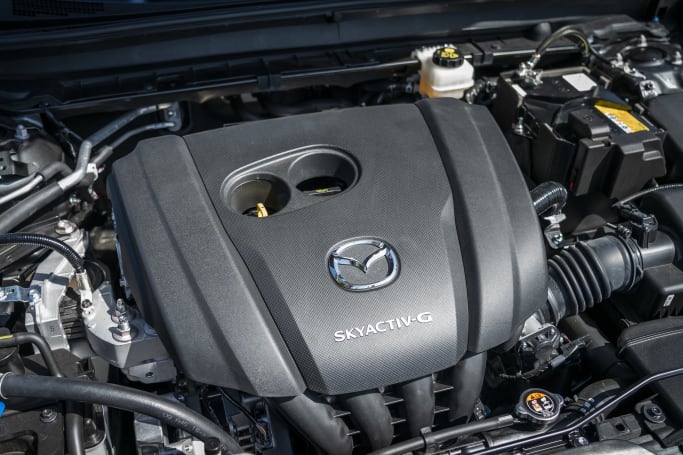
So this means the familiar 114kW/200Nm Skyactiv-G 2.0 and139kW/252Nm 2.5 which now features fuel-saving cylinder deactivation.
Mazda is also expected to continue the Mazda3’s industry-bucking trend of offering six-speed manual and auto versions across trim levels, but spreading this further with a choice of two or all-wheel drive.
This is another area still awaiting clarification for Australia, but I’d expect the combined figures to be pretty close to the Mazda3 hatch.
So figure on just above 6.0L/100km for the 2.0-litre with either transmission, and just above 6.5L/100km for the 2.5 version, and both will no doubt carry on Mazda’s traditional ability to do its best on the cheaper Regular 91 RON unleaded.
Anyone who’s driven the new Mazda3 will not be surprised by the CX-30, but pretty much anyone else is likely to be blown away.
This new platform is such a big step over the old one in terms of refinement and overall comfort, which still underpins the CX-3 and CX-5.
Aside from being marginally taller, it really just feels like you’re driving a new 3 with better driver visibility because of the thinner C-pillars and taller windows all round.
There’s also a sense of substance well beyond what you feel behind the wheel of a CX-3, which probably comes from having the front seats as far apart as a CX-5.
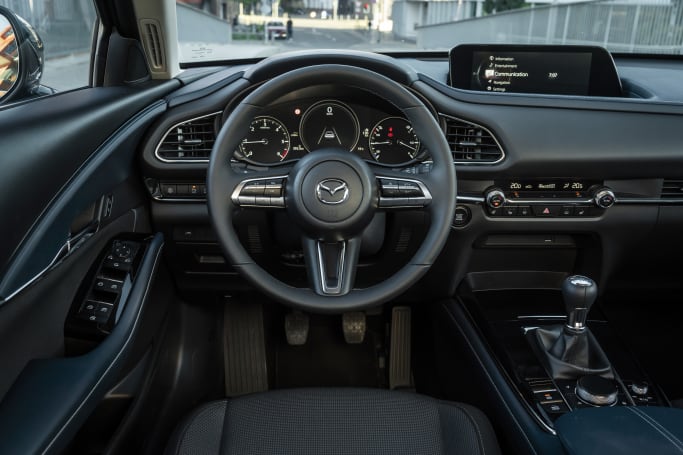
We only had the chance to drive the detuned mild-hybrid version of the 2.0-litre petrol engine and 1.8-litre diesel available in Europe, so can’t really speak to the CX-30’s drivetrain performance.
But given the similar size and weight to the new Mazda3, I expect the likely 2.0 and 2.5-litre petrol versions to offer the same flavours of capable and that much more capable that we’re used to.
Basic Warranty
5 years / unlimited km warranty
ANCAP Safety Rating

Given Mazda’s recent track record with safety, I’d be very surprised if the CX-30 scrimped on safety gear, and even more surprised if it didn’t wind up with the maximum five-star safety rating from ANCAP.
I’d also expect airbag coverage for both rows of seats, front and rear AEB, front and rear cross-traffic alerts, lane keeping assistance and blind-spot monitoring.
Like all new Mazdas, the recently upgraded five-year, unlimited kilometre warranty will apply to the CX-30.
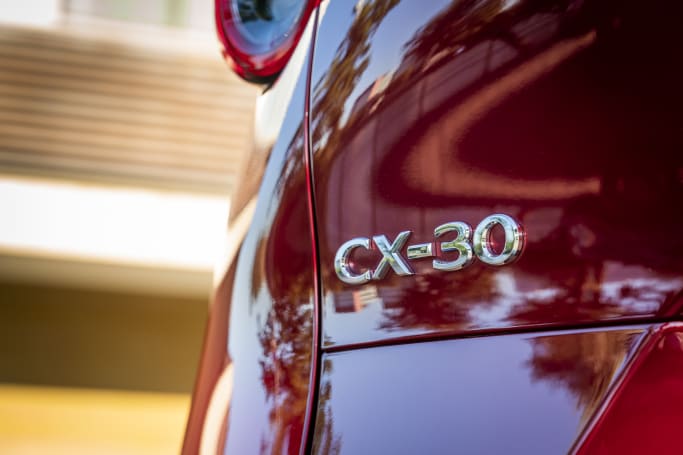
Likewise with capped price servicing for the first five years or 50,000km, but pricing is yet to be confirmed. If the mechanical package mimics the Mazda3 as expected, the CX-30 will likely carry the same 12month/10,000km intervals and similar service costs of just under $2000 over five years regardless of engine.
So is this the small Mazda SUV we’ve been waiting for? If they price it right, it’ll be a good solution, and also make every other small SUV feel a bit old. Get ready to see plenty of CX-30s on Australian roads.
| Vehicle | Specs | Price* | |
|---|---|---|---|
| G20 Pure Vision (fwd) | 2.0L, ULP, 6 SP AUTO | $28,600 – 34,430 | 2020 Mazda CX-30 2020 G20 Pure Vision (fwd) Pricing and Specs |
| G20 Evolve (fwd) | 2.0L, ULP, 6 SP AUTO | $28,600 – 34,430 | 2020 Mazda CX-30 2020 G20 Evolve (fwd) Pricing and Specs |
| G20 Pure (fwd) | 2.0L, ULP, 6 SP AUTO | $26,510 – 32,780 | 2020 Mazda CX-30 2020 G20 Pure (fwd) Pricing and Specs |
| G20 Astina (fwd) | 2.0L, ULP, 6 SP AUTO | $33,880 – 40,370 | 2020 Mazda CX-30 2020 G20 Astina (fwd) Pricing and Specs |
| Design | 9 |
|---|---|
| Practicality | 8 |
| Price and features | 8 |
| Under the bonnet | 8 |
| Efficiency | 8 |
| Driving | 9 |
| Safety | 9 |
| Ownership | 8 |
$21,480
Lowest price, based on 176 car listings in the last 6 months